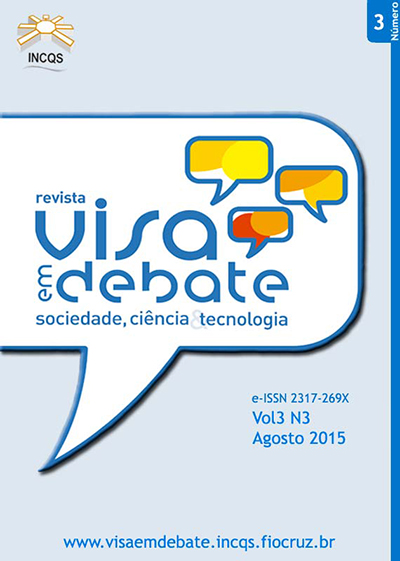Investigation of an outbreak caused by Cronobacter malonaticus in a Maternity Hospital in Teresina, Piauí: Characterization and typing by pulsed-field gel electrophoresis
DOI:
https://doi.org/10.3395/2317-269x.00290Keywords:
Cronobacter spp., PFGE, Phenotypic Characterization, Genotypic Characterization, Infant FormulaeAbstract
Cronobacter spp. are considered opportunistic pathogens that cause severe infections in newborns due to the consumption of powdered infant formulas. In 2013, three cases of infection in neonates caused by the Cronobacter spp. were reported in a Maternity Hospital at Teresina, Piauí. The objective of this study was to investigate the outbreak to elucidate the source of contamination, identify the species involved, and assess the genetic relatedness among the clinical isolates. The samples of powdered infant formulas and pasteurized human milk that were ingested by the neonates were analyzed by different cultivation methods. The clinical strains were phenotypically characterized by the Vitek 2.0 system and conventional biochemical tests. To identify the genus and species, polymerase chain reaction targeting gluA and rpoB, respectively, was performed. The isolates were typed by pulsed-field gel electrophoresis using the restriction enzyme Spel. No food sample showed contamination by Cronobacter spp. Three blood isolates were identified as C. malonaticus, two classified as biogroup 9 and one as biogroup 5, and were grouped in the same genotype. Our results suggest that the same clone was responsible for infection in three patients, but the source of contamination could not be identified.Downloads
Downloads
Additional Files
Published
Issue
Section
License
Copyright (c) 2015 Health Surveillance under Debate: Society, Science & Technology (Vigilância Sanitária em Debate: Sociedade, Ciência & Tecnología) – “Visa em Debate”

This work is licensed under a Creative Commons Attribution-NonCommercial-NoDerivatives 4.0 International License.
COPYRIGHT ALLOWANCE The author (s) hereinafter designated as the ASSIGNOR hereby assign and transfer, free of charge, the ownership of the copyrights related to this ARTICLE to the Vigilância Sanitária em Debate: Sociedade, Ciência & Tecnologia (Health Surveillance under Debate: Society, Science & Technology) – Visa em Debate, represented by FUNDAÇÃO OSWALDO CRUZ, established at Av. Brasil, nº 4365, Manguinhos, Rio de Janeiro, RJ, Brazil, CEP 21045-900, under the conditions set out below: (a) The terms and conditions set forth in this Agreement shall apply to the following: 1. The ASSIGNOR declares that they s(he) is (are) the author (s) and owner (s) of the copyrighted property of the ARTICLE submitted. 2. The ASSIGNOR declares that the ARTICLE does not infringe the copyrights and / or other property rights of third parties, that the disclosure of images (if any) has been authorized and that they s(he) assume(s) full moral and / or property liability for its content, before third parties. 3. THE ASSIGNOR assigns and transfers all copyrights relating to the ARTICLE to the ASSIGNEE, especially the rights of editing, publication, translation into another language and reproduction by any process or technique. The ASSIGNEE becomes the exclusive owner of the rights related to the ARTICLE, and any reproduction, totally or partially, is prohibited in any other means of publicity, printed or electronic, without prior written authorization from the ASSIGNEE. 4. The assignment is free and, therefore, there will be no remuneration for the use of the ARTICLE by the ASSIGNEE.







